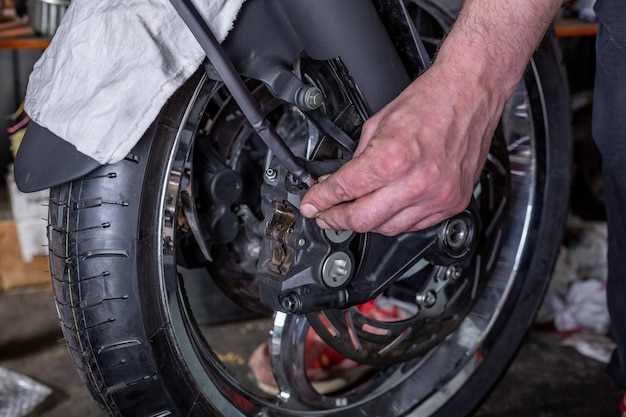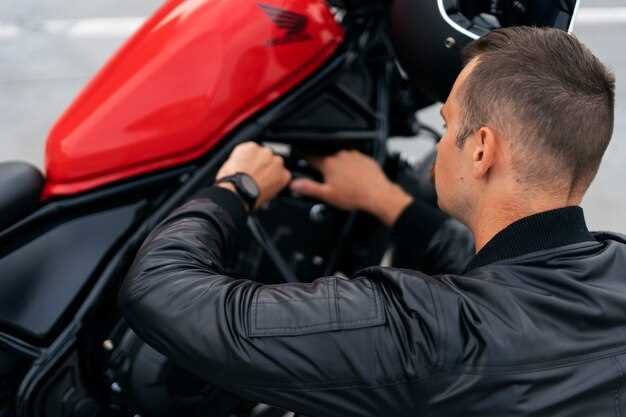
Replacing the clutch on your motorcycle is an essential repair that ensures optimal performance and a smoother riding experience. Understanding this process can save you both time and money, empowering you to tackle maintenance tasks with confidence. This guide will walk you through each step, providing detailed instructions to help you replace your motorcycle clutch efficiently.
Clutch issues can manifest in various ways, such as slipping, hard engagement, or a complete failure to disengage. Addressing these problems promptly is crucial, as neglect can lead to further damage and costly repairs. Whether you are a seasoned mechanic or a DIY enthusiast, this comprehensive step-by-step guide is designed to cater to different skill levels, making it accessible to everyone.
Throughout this article, we will cover the necessary tools, safety precautions, and detailed procedures needed for a successful clutch replacement. By following these steps, you can ensure that your motorcycle remains reliable and enjoyable to ride for years to come. Let’s dive into the process and discover everything you need to know to get started!
Identifying Symptoms of a Worn Clutch

A motorcycle’s clutch is a vital component that ensures smooth power transfer from the engine to the transmission. Recognizing the symptoms of a worn clutch is crucial for timely repair and maintaining optimal performance. Here are some key indicators to watch for:
Difficulty Engaging Gears: If you experience trouble shifting gears, particularly when switching from neutral to first gear, it may suggest that your clutch is worn. This issue can lead to increased friction and hinder seamless transitions.
Slipping Clutch: A slipping clutch manifests when the engine revs but the bike doesn’t accelerate as expected. This symptom is often caused by a worn friction plate, preventing it from adequately gripping the pressure plate.
Unusual Noises: Listen for grinding, rattling, or chirping sounds when pulling the clutch lever. These noises can indicate wear on the clutch components and might necessitate immediate attention to avoid further damage.
Increased Clutch Lever Travel: If you notice that the clutch lever requires more pull or travel than before to engage or disengage the clutch, this could indicate that the clutch assembly is wearing out and needs inspection.
Burning Smell: A burning smell while riding may signal that the clutch is overheating due to excessive slipping or improper engagement. This symptom should not be ignored, as it can lead to more severe damage if not addressed promptly.
Difficulty in Releasing the Clutch: A clutch that feels sticky or fails to disengage smoothly can lead to challenges in stopping and starting safely. This problem often stems from worn components and requires repair to ensure safe operation.
Being aware of these symptoms will help you maintain your motorcycle’s performance and prevent potentially costly repairs down the line. Regular inspection and prompt action are essential for a well-functioning clutch system.
Step-by-Step Process for Clutch Replacement
Replacing a motorcycle clutch can seem daunting, but with the right tools and a clear process, you can successfully complete this repair. Follow these detailed steps to ensure a smooth clutch replacement.
Step 1: Gather Tools and Materials
Before starting, make sure you have all necessary tools, including a socket set, screwdrivers, a torque wrench, and a clutch replacement kit specific to your motorcycle model.
Step 2: Prepare the Motorcycle
Place your motorcycle on a stable stand to ensure it doesn’t tip over during the repair. Allow the engine to cool down completely before proceeding.
Step 3: Remove the Clutch Cover
Carefully detach the clutch cover by removing any securing bolts. Take your time to avoid stripping the screws. Gently pry the cover off to reveal the clutch assembly.
Step 4: Disengage the Clutch Cable
Locate and disconnect the clutch cable. This usually involves loosening the cable adjustment barrel and removing it from the lever or the clutch arm.
Step 5: Take Off the Old Clutch
Remove the pressure plate by unscrewing the bolts that hold it in place. Once removed, take out the clutch plates and springs. Pay attention to how they are arranged for reinstallation.
Step 6: Inspect Components
Check the clutch basket, pressure plate, and plates for wear and damage. Replace any worn components to ensure a reliable repair.
Step 7: Install New Clutch Plates
Start by soaking the new clutch plates in oil for a few minutes. Install the new plates in the same order as the old ones, alternating between friction and steel plates as per manufacturer guidelines.
Step 8: Reattach the Pressure Plate
Once the new plates are in place, carefully position the pressure plate back and secure it with the bolts. Use a torque wrench to tighten them to the specified settings in your owner’s manual.
Step 9: Reconnect the Clutch Cable
Reattach the clutch cable to the lever and the clutch arm, ensuring proper tension without excessive slack.
Step 10: Replace the Clutch Cover
Seal the clutch cover back in place, making sure to use a fresh gasket if required. Tighten the bolts in a crisscross pattern to ensure even pressure.
Step 11: Test the Clutch
Before taking your motorcycle for a ride, pull in the clutch lever to check for smooth operation. Test the clutch engagement and disengagement while in neutral.
Step 12: Take a Test Ride
Finally, go for a short test ride to ensure the new clutch is functioning properly. Monitor the performance and adjust the cable tension if necessary for optimal operation.
Tools and Parts Needed for Successful Clutch Repair

To ensure a smooth and effective motorcycle clutch repair, having the right tools and parts is essential. Below is a comprehensive list of what you will need.
Tools:
1. Socket Set: A complete socket set with various sizes will help you remove and reinstall the clutch cover and other components efficiently.
2. Torque Wrench: This tool is crucial for applying the correct amount of torque to screws and bolts, ensuring that they are neither too loose nor overly tightened.
3. Screwdrivers: A set of flathead and Phillips screwdrivers will allow you to remove screws that hold different parts of the clutch assembly.
4. Pliers: Needle-nose pliers can be useful for gripping and manipulating small parts, such as retaining clips or springs.
5. Clutch Tool: A specialized clutch tool may be required for your specific motorcycle model to hold the clutch basket in place while you work on it.
6. Cleaning Supplies: Rags, brushes, and cleaning solutions will help remove grime and old oil from the clutch components, ensuring a clean workspace.
Parts:
1. Clutch Plates: Replace the clutch friction plates and steel plates as needed. Ensure to check compatibility with your motorcycle model.
2. Clutch Springs: Worn springs can significantly affect clutch performance. Always consider replacing them with new ones during repair.
3. Gasket: A new gasket is necessary if the old one is damaged to prevent oil leaks after reassembly.
4. Oil: Use the recommended motorcycle oil for the clutch to maintain optimal performance. It’s crucial to choose oil that meets your motorcycle’s specifications.
5. Release Mechanism Parts: Inspect the clutch release lever and cable for wear; you may need to replace them if they show signs of damage.
With these tools and parts at hand, you will be well-prepared to tackle your motorcycle’s clutch repair successfully.




